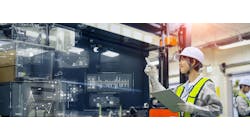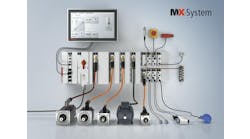There is much involved to make it as a successful original equipment manufacturer (OEM). It takes a great idea and money to build the first piece of equipment, but unless there is company behind it that inspires confidence in itself and a clearly proposed design, it may never be successfully sold and built.
Put simply, if the machine builder is saying, "I'm designing it as I go," you have already failed. The design must come before the build.
OEMs typically build equipment that is in demand by industry. They are the subject matter experts; they build the equipment well; and they likely fill a specialized need. Being the expert is a good starting point, but other OEM businesses are built based on a patent or a cool idea on how to make or process something. Whatever the OEM equipment is, success starts with the sale of the first unit—serial number 00001—and then it’s duplicated.
How do you get that first purchase order? Do you drain your savings and retirement accounts and get a second mortgage on you house to build the first machine and then hope to attract buyers? An acquaintance of mine tried that, and he failed—twice. He won't survive a third failure in his specialized industry of choice. They will remember him.
He started with an idea he patented, and then he built a prototype piece of equipment that could never run production. It didn't even meet requirements that didn't exist. He couldn't sell what he built. The machine just poorly demonstrated the process.
He missed the part where you need to use the proper resources. Failure points included building a machine before it was designed or even sold. And the original builder didn't have the OEM’s best interests at heart. It just got paid to build something.
Others tried to steal my acquaintance's idea and build a similar piece of equipment, but they failed. That just added to the difficulty of selling this new automation idea to his target industry.
In another near failure, a multi-billon-dollar player in the industry feigned interest in buying many pieces of his equipment, but they were just mining information from the expert. It was clear they planned to use their considerable equipment-design-and-build resources to steal the design and make it themselves. I told him to run away from that deal and beware—he ran.
And even others wanted to partner with the want-to-be OEM and finance the equipment. The only problem was the partner's offer was offensive. Its well-worded contract basically said it would control everything, and it wouldn't be long before the partner took the idea and made it all, leaving the OEM nothing but unpaid bills and a lost dream.
So, where to start? Caution, even a good idea may never fly. However, consider only providing one piece of custom equipment to start. Then go sell that, but partner with a reliable equipment builder and have the proper contracts in place, so they don't steal the design.
Sell the resources and design concept, not just a physical piece of equipment. That includes past project experience and capabilities such as engineering, design and manufacturing. As a new OEM, you may have none of that. A reliable, trustworthy machine builder will and can provide technology resources, key requirement for success, from system concept through field support of installed equipment.
At this point you have a machine builder, but don't build anything until you get a purchase order. The great idea for OEM equipment needs to begin its life as a system description and a conceptual design complete with a 3D model drawing. That's how you sell a custom piece of equipment—a proposal with specifications, equipment overview and operational summary. Clear details about the machine features and design must be available in a technical proposal document, or, even better, call it a design specification.
It's hard to believe, but my acquaintance never created a machine specification over the decades he has been trying to bring his OEM equipment to life. A list of system specifications and performance is a must. Maximum cycle rate, yield and uptime capabilities should be formally documented but never were, other than in dozens of informal emails.
He also must have discussed the major components in the OEM equipment over a hundred times, so why not write a brief description of each component, its operation or purpose and how it is controlled?
This is where the 3D concept drawing and design specification come in. Show the well-thought-out preliminary design on a big screen and in print. Propose what will be built. Hopefully the customer feels compelled to purchase it.
Unfortunately, my acquaintance built a prototype piece of equipment on the fly and then tried to show it to customers hoping they would buy production machines. At best, the machine performed poorly and it looks as bad as the manufacturing practices used to build it. A 3D concept would have looked much better. A new team is still trying to create a production machine on the fly, but I'm not sure it will function as promised in the many emails and phone calls. The resources may be assembled; yet the design doesn't exist. It should have been created and documented first. That need will become obvious if the opportunity ever arises to build a second machine.






